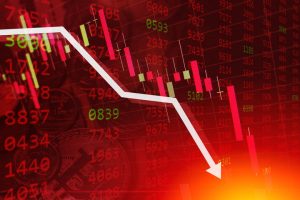
Cannon Futures Weekly Letter Issue # 1198
In this issue:
- Important Notices – Rollover, Juneteenth
- Futures 101 – Unlock the Secrets of Day Trading Futures
- Hot Market of the Week – July Hogs
- Market Scanner – For Monday June 17th
- Broker’s Trading System of the Week – Mini Nasdaq Swing Trading System
- Trading Levels for Next Week
- Trading Reports for Next Week
Important Notices – Next Week Highlights:
- Juneteenth is this Wednesday, June 19th. Modified trading schedule.
- Rollover is here! Start trading September mini SP, mini NQ, Micros etc.
- Heavy Private Sector/Consumer Data: Tues: Retail Sales, Wed: Housing market Index, Thur: Bldg Permits, Housing Starts, Jobless Claims, Philly Fed, Fri PMI Flash, Existing Home Sales.
- Heavy Fed Speakers: 7 Count ’em! , Mon: Cook, Tues. Collins, Kuglar, Logan, Muselem, Goolsbee, Thu. Barkin
- Light Earnings: ACCenture PLC is the highest Cap stock reporting and it’s pre market open on Thursday.
Watch video below on how to rollover if you are a stock index trader on our E-Futures Platform!

Futures 101 :
Are you ready to take your trading skills to the next level? At Cannon Trading, we’re excited to offer you a powerful resource designed to help you master the art of day trading futures.
Inside this comprehensive guide, you’ll discover:
Table of Contents (12 Chapters)
- 1. Introduction to Day Trading Futures
- What is Day Trading?
- Overview of Futures Contracts
- Why Trade Futures?
- 2. Getting Started with Day Trading Futures
- Education and Research
- Choosing a Reliable Futures Broker
- Creating a Trading Plan
- Practicing with Simulated Trading
- 3. Essential Tools and Platforms
- Trading Platforms
- Charting Software
- News and Data Feeds
- Advanced Trading Tools
- 4. Technical Analysis for Day Trading Futures
- Understanding Price Charts
- Key Technical Indicators
- Patterns and Trends
- Using Technical Analysis for Entry and Exit Points
- 5. Day Trading Strategies
- Scalping
- Momentum Trading
- Breakout Trading
- Mean Reversion
- News-Based Trading
- 6. Risk and Money Management
- Importance of Risk Management
- Position Sizing
- Setting Stop-Loss Orders
- Managing Leverage
- 7. Psychological Aspects of Day Trading
- Emotional Control
- Developing Discipline
- Overcoming Fear and Greed
- Building a Winning Mindset
- 8. Advanced Techniques and Concepts
- Order Flow Analysis
- Volume Profile
- Market Profile (TPO)
- High-Frequency Trading (HFT)
- 9. Case Studies and Examples
- Real-Life Trading Scenarios
- Successful Day Trading Examples
- Common Mistakes and How to Avoid Them
- 10.Continuous Improvement and Adaptation
- Reviewing and Analyzing Trades
- Keeping Up with Market Changes
- Ongoing Education and Development
- 11.Conclusion
- Summary of Key Points
- Final Advice for Aspiring Day Traders
- Resources for Further Learning
- 12.Twenty-Five Essential Indicators for Day Trading Futures
- 13. Index of Futures Trading Resources
- 14.Disclaimer



-
Hot Market of the Week – July Hogs
Hot market of the week is provided by QT Market Center, A Swiss army knife charting package that’s not just for Hedgers, Cooperatives and Farmers alike but also for Spread traders, Swing traders and shorter time frame application for intraday traders with a unique proprietary indicator that can be applied to your specific trading needs.
July Hogs
July hogs resumed their break to a new low where the chart satisfied its second downside PriceCount objective, just above the contract low. At this point, IF the chart can erase the contract low and sustain further weakness, the third count would project a possible slide to the 81.23 area.
PriceCounts – Not about where we’ve been , but where we might be going next!
The PriceCount study is a tool that can help to project the distance of a move in price. The counts are not intended to be an ‘exact’ science but rather offer a target area for the four objectives which are based off the first leg of a move with each subsequent count having a smaller percentage of being achieved. It is normal for the chart to react by correcting or consolidating at an objective and then either resuming its move or reversing trend. Best utilized in conjunction with other technical tools, PriceCounts offer one more way to analyze charts and help to manage your positions and risk. Learn more at
www.qtchartoftheday.comTrading in futures, options, securities, derivatives or OTC products entails significant risks which must be understood prior to trading and may not be appropriate for all investors. Past performance of actual trades or strategies is not necessarily indicative of future results.
Market Scanner
If you are a day trader, below you will see markets that our proprietary ALGO has identified as being more suitable for attacking either from the long side or the short side for the next trading session.
Broker’s Trading System of the Week
With algorithmic trading systems becoming more prevalent in portfolio diversification, the following system has been selected as the broker’s choice for this month.
Swing61B Cont v.22 _ E-mini Nasdaq NQ
PRODUCT
NQ – Mini Nasdaq
SYSTEM TYPE
Swing
Recommended Cannon Trading Starting Capital
$35,000
COST
USD 160 / monthly

The performance shown above is hypothetical in that the chart represents returns in a model account. The model account rises or falls by the average single contract profit and loss achieved by clients trading actual money pursuant to the listed system’s trading signals on the appropriate dates (client fills), or if no actual client profit or loss available – by the hypothetical single contract profit and loss of trades generated by the system’s trading signals on that day in real time (real‐time) less slippage, or if no real time profit or loss available – by the hypothetical single contract profit and loss of trades generated by running the system logic backwards on back adjusted data.
Please read full disclaimer HERE.
|
Would you like to receive daily support & resistance levels?
|
Daily Levels for June 17th 2024

Trading Reports for Next Week
First Notice (FN), Last trading (LT) Days for the Week:
Improve Your Trading Skills
Get access to proprietary indicators and trading methods, consult with an experienced broker at 1-800-454-9572.
Explore trading methods. Register Here
* This is not a solicitation of any order to buy or sell, but a current market view provided by Cannon Trading Inc. Any statement of facts here in contained are derived from sources believed to be reliable, but are not guaranteed as to accuracy, nor they purport to be complete. No responsibility is assumed with respect to any such statement or with respect to any expression of opinion herein contained. Readers are urged to exercise their own judgement in trading.









































